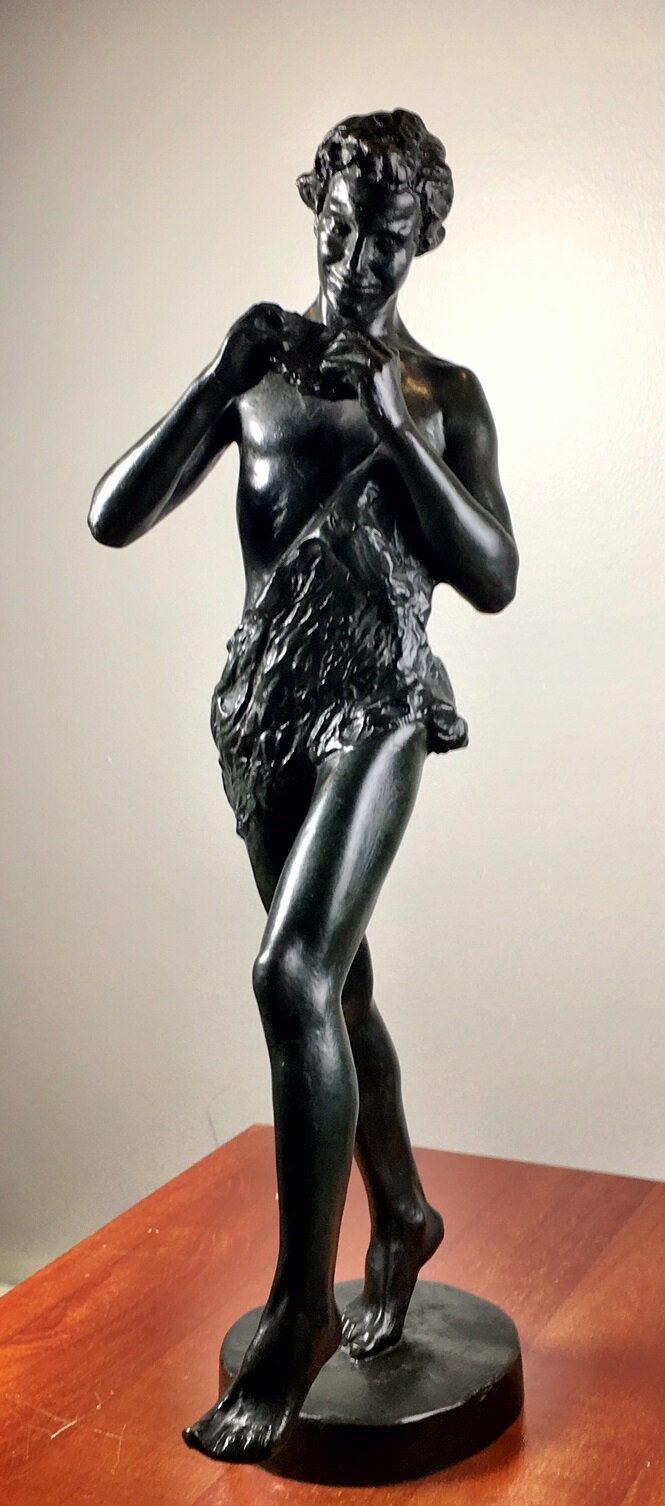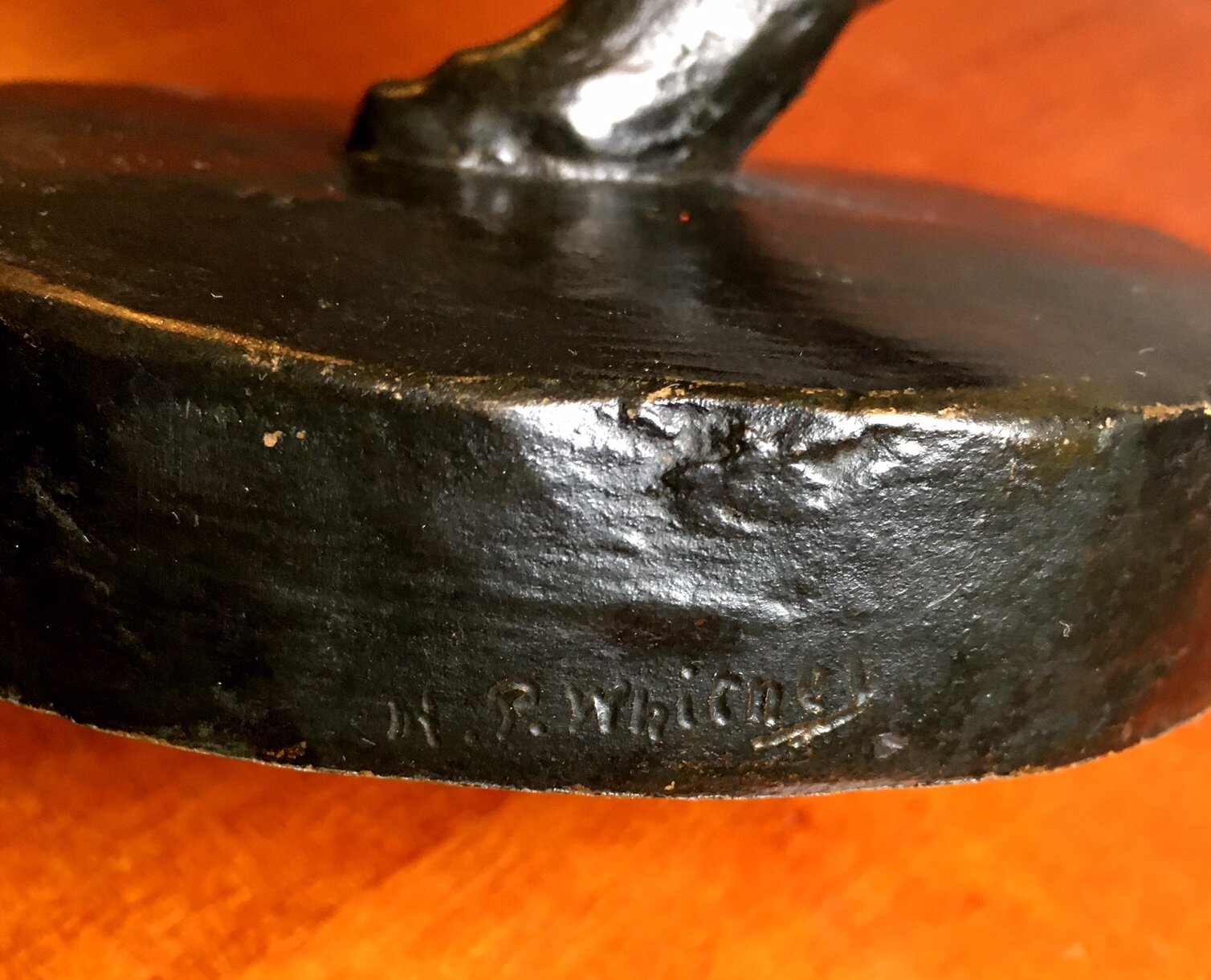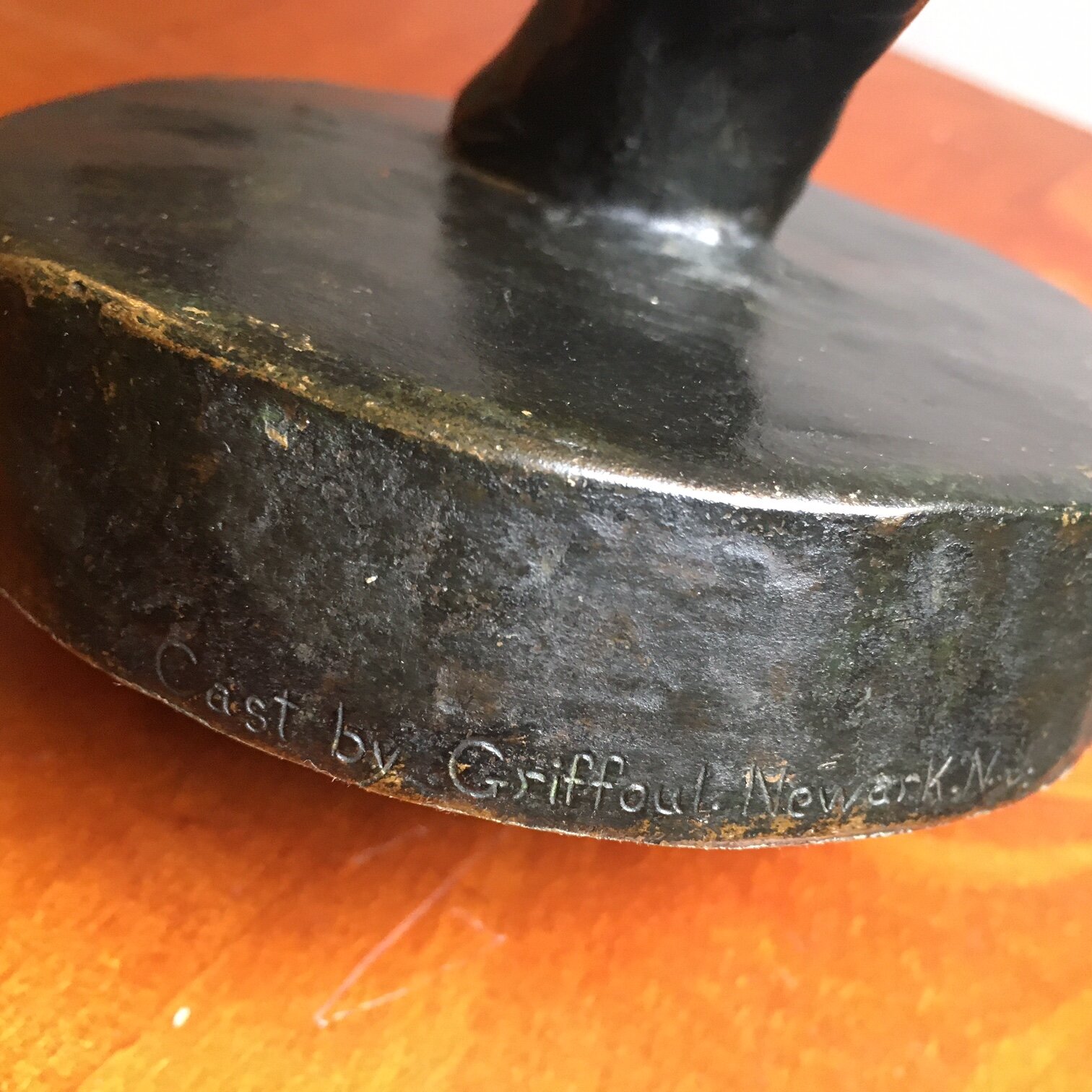
Gertrude Vanderbuilt Whitney

Harry Payne Whitney as Pan, bronze, ca. 1960


Gertrude Vanderbilt Whitney was the eldest surviving daughter of Cornelius Vanderbilt II and Alice Claypoole Gwynne and a great-granddaughter of Commodore Cornelius Vanderbilt. Gertrude spent her summers in Newport, Rhode Island, at the family's mansion, The Breakers, where she kept up with the boys in all their rigorous sporting activities. Educated by private tutors and at the exclusive Brearley School in New York City, at age 21 she married the extremely wealthy sportsman Harry Payne Whitney (1872–1930).
A banker and investor, Whitney was the son of William C. Whitney, and his mother was the daughter of a Standard Oil Company magnate. Harry Whitney inherited a fortune in oil and tobacco as well as interests in banking. Gertrude and Harry Whitney had three children, Flora (1897), Cornelius (1899), and Barbara (1903).
While visiting Europe in the early 1900s, Gertrude Whitney discovered the burgeoning art world of Montmartre and Montparnasse in France. What she saw encouraged her to pursue her creativity and become a sculptor.
As such, she studied her craft at the Art Students League of New York and then with Auguste Rodin in Paris. Eventually, she maintained art studios in Greenwich Village and in Passy, a fashionable Parisian neighborhood in the XVI arrondissement. Her works received critical acclaim both in Europe and the United States.
In 1914, in one of the many Manhattan properties she and her husband owned, Gertrude Whitney established the Whitney Studio Club at 8 West 8th Street in Greenwich Village as a facility where young artists could exhibit their works. The place would evolve to become her greatest legacy, the Whitney Museum of American Art.
A colorful recollection of one of her parties celebrating her artist friends was recounted by the artist Jerome Myers. "Matching it in memory is a party at Mrs. Gertrude Vanderbilt Whitney's, on her Long Island estate, the artists there a veritable catalog of celebrities, painters and sculptors. I can hardly visualize, let alone describe, the many shifting scenes of our entertainment: sunken pools and gorgeous white peacocks as line decorations spreading into the gardens; in their swinging cages, brilliant macaws nodding their beaks at George Luks as though they remembered posing for his pictures of them; Robert Chanler showing us his exotic sea pictures, blue-green visions in a marine bathroom; and Mrs. Whitney displaying her studio, the only place on earth in which she could find solitude. Here the artists felt at home, the Whitney hospitality always gracious and sincere."
Whitney did not sign her earlier sculptures as it would have caused a scandal were it known that someone of her wealth and social standing was working with bohemian artists, let alone modeling from the male nude. This sculpture bears the name of her husband on its base. It is possible that either she used her husband’s name on the sculpture to hide her own identity or, more plausible, that she depicted her husband as an ideal Greco-Roman shepherd, or the god Dionysius, the half god/half human gold of agriculture, nature, and wine. Whitney throughout her career modeled sculptures of pagan/Greek/Roman figures including Pan, Bacchante, Daphne. She also made sculptures of her two daughters, Flora and Barbara.
Public sculpture:
The Scout commemorating Buffalo Bill in Cody, Wyoming
Monument to the Discovery Faith in Huelva, Spain.
Fountain of El Dorado – San Francisco, California (now in Lima, Peru);
Aztec Fountain - Washington, D. C.;
Women's Titanic Memorial - Washington, D. C.;
William F. Cody Memorial - Cody, Wyoming
Victory Arch - Madison Square, New York City
Three Graces - McGill University
First World War memorial, Washington Heights, New York City
Collections: Whitney Museum, Metropolitan Museum, Buffalo Bill Historical Center, Detroit Institute of Arts, Virginia Museum of Fine Arts, Brookgreen Gardens, Cleveland Museum of Art, Centre Pompidou, Paris.
